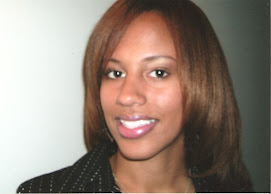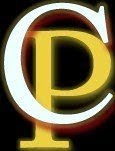skip to main |
skip to sidebar
walking down the street one day you see a pretty little girl with beautiful, long, wavy hair that cascades down her back. In the black community, the first thing we normally say is, ‘wow, that child has some 'good hair’. Good hair? What exactly is “good hair”? Comedian Chris Rock had that same question in mind when producing the upcoming documentary “Good Hair”, which hit select theatres Friday, October 9, 2009 and theatres nationally on October 23, 2009. Rock explained he was presented with a difficult question from his daughter who asked, “Daddy, why don’t I have good hair?” This is what led him to go on the search throughout the black community to find that exact answer. His documentary takes you to visit many beauty and barbershops, and as far as India.
I was watching The Oprah Winfrey Show the other day and Chris Rock was a guest on her show discussing his movie. There were clips from the movie shown with celebrities, such as Nia Long and Raven Simone, explaining how the hair they were wearing was not their real hair, but not to my surprise, was a head full of weave. Now there is nothing wrong with wearing a weave, but I sometimes wonder do people not like their hair. Has the media really corrupted our minds so much to the point that we don’t appreciate what we have naturally therefore we try to mimic those we see on television, who typically have hair to their behind.
Solange, who recently liberated herself from the bondage of weave, said she would spend nearly $40,000 to $50,000 on her hair weave. That could possibly be someone’s yearly salary. Chris Rock even agreed with Solange stating how he now noticed her even more without the hair. He explained with the weave she was just another pretty girl with a head full of weave, but with the fade he could truly see her beauty, her face and how uniquely beautiful she really is. This is not to say everyone should go to their nearest barbershop and request a low fade. But one thing I always say to my clients, ‘You have to work with what you’ve got’. Your hair might not fall down to the middle of your back or even past your shoulders. But if it has bounce, shine and is healthy, that is all that truly matters.
I think Solange Knowles put it best when she said, “My mother always told us, there is no such thing as good hair, there is only healthy hair”. I strongly agree. You can have hair down to the middle of your back, but it can still be dry, brittle, and unmanageable. I would rather have a head of hair that is short, bouncy and healthy, than a head full of long damaged hair.
To educate you a little about the different types of hair. There are four different types of hair: straight hair, wavy hair, curly hair, and kinky hair. All hair types have three different sub-types that generally fall under the category fine and thin, medium textured, or thick and coarse. So it goes to show how our hair varies and is unique to us.
- Straight hair (which is what we as African Americans aim for when applying that “creamy crack”) is actually the hardest type of hair to curl. Although the hair is almost impossible to damage, it is more likely to be oily than dry because it has more cuticle layers. Damaged straight hair is very dry and brittle, with very thin ends.
- Wavy hair is typically coarse with a definite “S” pattern. This type of hair has a tendency to frizz and is a little more resistant to styling. It is difficult to get wavy hair to look curly due to the fact that it lies close to the head. Wavy hair tends to be normal; neither oily nor dry.
- Curly hair has a lot of body and is easily styled when it is in its natural state. It can be easily straightened with a blow dryer so it can be styled into a smoother style. Healthy curly hair is shiny with soft smooth curls, has strong elasticity and the curls are well-defined. Damaged curly hair is usually frizzy, dull, hard, and dry to the touch. Curly hair needs to be kept as moist as possible; when it dries it starts to break.
- Kinky hair is very tightly curled, wiry and very fragile. The hair consists of lots of thin strands densely packed together. The hair typically won’t shine, but has sheen and is soft to touch. This type of hair has fewer cuticle layers than any other hair type and needs moisture. Kinky hair needs protein based products, protein builds elasticity into the hair shaft. If hair is relaxed, products that are formulated for dry or chemically treated hair are best used.
After completing this article I have received mixed reviews about the documentary ‘Good Hair’. Please click on the comment tab below and share your thoughts on the soon to be released film, or about the subject of good hair period. Thanks for your support and please keep on reading!!!
What is one of the first things you think of when you hear the word Beauty Salon (besides hair)? GOSSIP! Yes, gossip. We are all active participants in this cyclical activity whether you are doing the talking, listening or just simply being a spectator. It may sometimes seem innocent, but unhealthy conversation can do more than hurt someone’s reputation. Loose lips may also lead to violence such as the internet video which displayed a young beautician, who was servicing a client at the time, being brutally beaten by patrons of the salon due to gossip a.k.a. ‘he said, she said’.
We learn how to do it at such a young age; playing telephone, listening to our mother’s conversations with friends, and also watching the women interact with others in the beauty salon. And do not get me wrong ladies, men do gossip too, whether they will admit it or not. To some gossiping is like second nature, they just cannot help it. But it is our job as the professional to maintain control of what is being discussed in our salon, whether we own the salon or are just renting booth space. It is often seen as unprofessional to take part in such activities as gossiping. This may even turn some clients away, therefore affecting the amount of cash in your pocket.
We are not only cosmetologist, but did you also know we are counselors, therapists, and sometimes even mediators. Although it is fine to get into conversation about what is going on in the lives of your client, be careful not to get too involved in the situation. Sometimes the client may want you to pass a message on to someone else, but I would be careful in doing even that. Words get so twisted when trying to relay messages, it is usually just best that the client relays the message on her own. Unless it is that client’s personal business that he or she chooses to share with you, or a general topic, there is really no need for it to be discussed.
Now I am not saying be silent while performing services on your client, but what I am saying is find other things to discuss other than who is doing what, who, when, why or how often. For example:
• Make it interesting. Try to come up with an open-ended question you will ask each client as a way to get conversation flowing in the right direction.
• Guide the conversation. Do not be afraid to re-direct conversation when it gets into talking about other people who are not present in the salon to speak for themselves.
• Lead by example! Be the one to set the tone of how their salon visit is going to be, and check yourself when you find yourself talking about somebody else’s business other than your own.
Ladies let’s get some business about ourselves and discuss topics that are of substance. Topics that may encourage uplift or educate another individual. Your mouth is a powerful tool and what you say you can never take back. There is no rewind button or do-overs. Once it is out there, that is it, be ready for whatever consequences may follow. Let me leave you with a quote from an unknown source:
GREAT MINDS DISCUSS IDEAS, Average Minds Discuss Events, small minds discuss people!
Where do you fit in?
Please feel free to comment below by clicking on the word ‘comment’. Thank you for your feedback.

